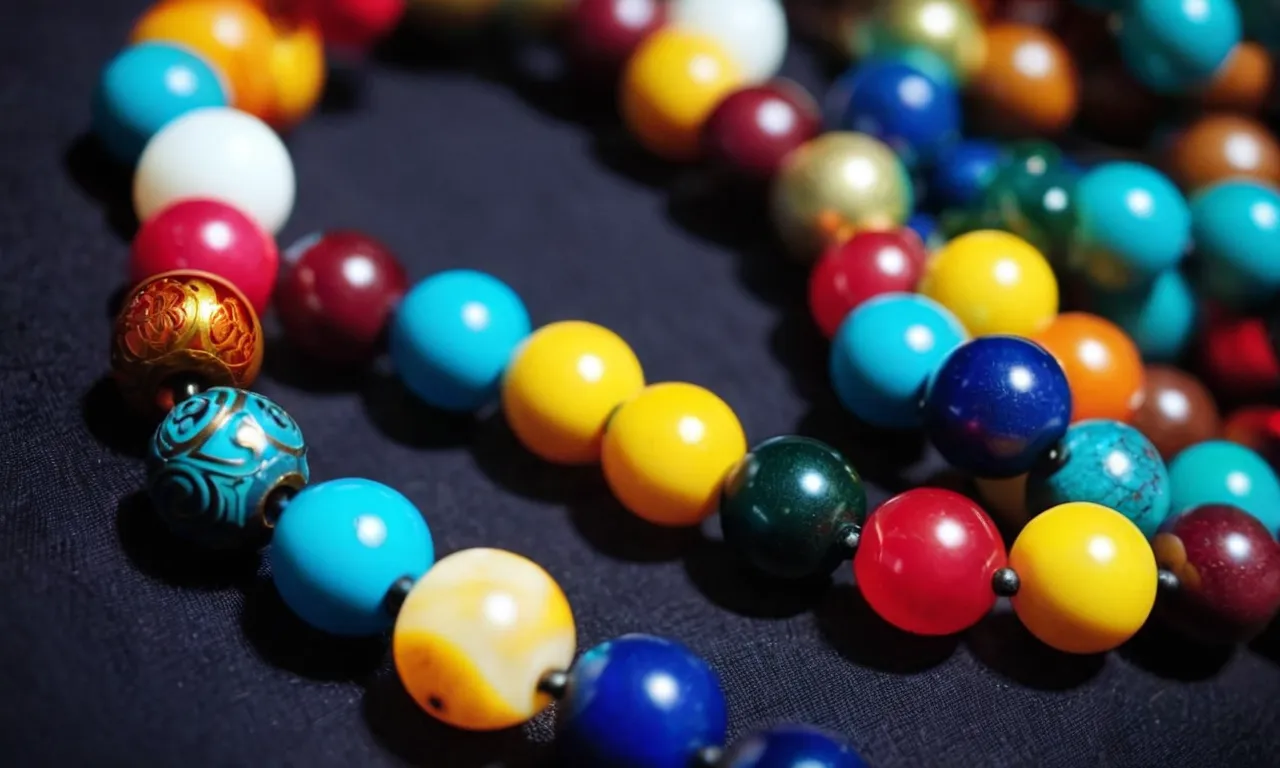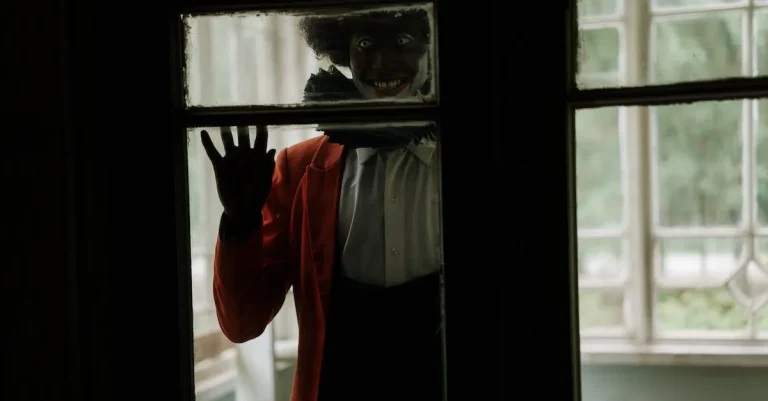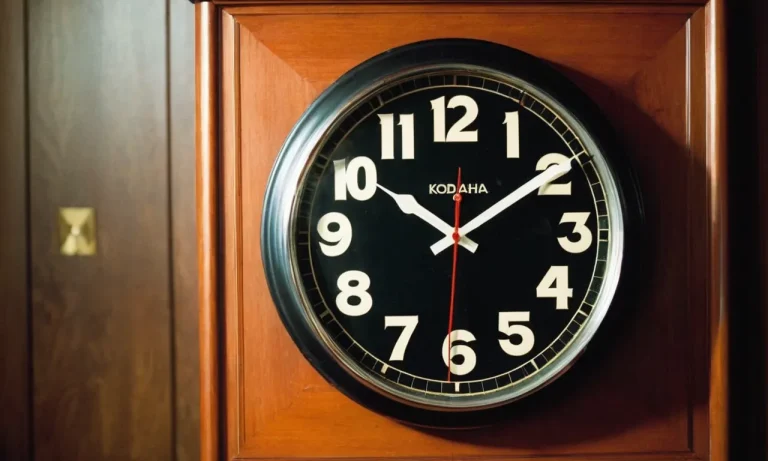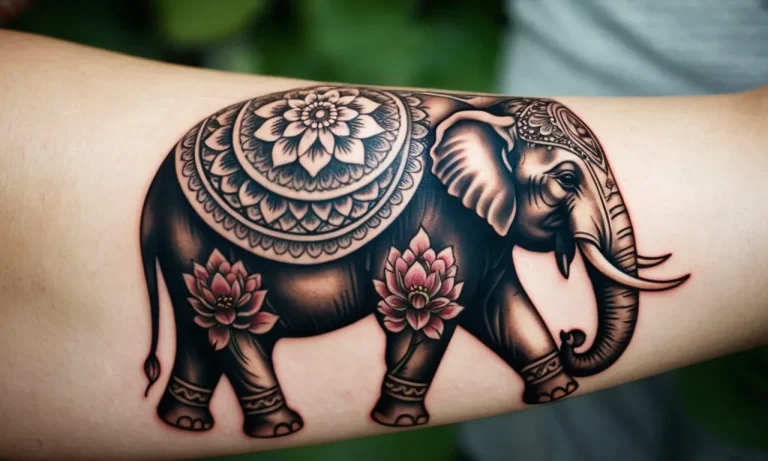Rosary Tattoo Meaning: Exploring The Symbolism And Significance
In the realm of body art, tattoos often carry profound meanings that resonate with the wearer’s beliefs, experiences, or personal journey. Among the myriad of designs, the rosary tattoo stands out as a powerful symbol that holds deep religious and cultural significance.
If you’re short on time, here’s a quick answer to your question: A rosary tattoo typically represents an individual’s devotion to the Catholic faith, the Virgin Mary, and the practice of prayer. It symbolizes spiritual strength, protection, and a connection to one’s religious roots.
In this comprehensive article, we will delve into the rich history and symbolism behind the rosary tattoo, exploring its various meanings, cultural influences, and the reasons why people choose to adorn their bodies with this sacred design.
We will also examine the different styles and placements of rosary tattoos, as well as the significance of incorporating additional elements into the design.
The Rosary: A Sacred Symbol of Faith
The rosary is a cherished devotional object that holds profound significance in the Catholic faith. It serves as a powerful symbol of spiritual connection, guiding believers through a series of meditative prayers.
The rosary’s origins can be traced back to the early Christian monastic tradition, where monks recited the Psalms using knotted ropes or strings to keep count. Over time, this practice evolved into the familiar form of the rosary we know today.
The Origins and Significance of the Rosary
According to Catholic Culture, the rosary as we recognize it today emerged in the late 12th century, with St. Dominic being credited as its founder. The rosary’s popularity soared in the 16th century when Pope Pius V established the modern rosary devotion and encouraged its recitation.
Today, the rosary remains a cornerstone of Catholic devotional practice, with millions of believers worldwide embracing its spiritual significance.
The Rosary as a Devotional Practice
The recitation of the rosary is a profound meditative experience that guides believers through the contemplation of key events in the lives of Jesus Christ and the Virgin Mary. Each decade of the rosary represents a specific mystery, such as the Joyful, Sorrowful, Glorious, or Luminous Mysteries.
As the beads are moved through the fingers, the recitation of prayers like the Our Father, Hail Mary, and Glory Be accompanies the meditation on these sacred mysteries. This practice fosters a deeper spiritual connection, instilling a sense of peace, gratitude, and reverence in the hearts of the faithful.
The Symbolism of the Rosary Beads
The rosary beads themselves hold rich symbolic significance. The crucifix at the beginning represents Christ’s sacrifice, while the subsequent beads signify specific prayers. The larger beads, known as “Our Father” beads, represent the Lord’s Prayer, and the smaller beads, called “Hail Mary” beads, symbolize the Angelic Salutation.
The inclusion of a medal or sacred image on the rosary further enhances its spiritual meaning. According to a National Catholic Register article, it is estimated that millions of Catholics around the world pray the rosary daily, underscoring its enduring significance in the Catholic faith.
The rosary tattoo, therefore, serves as a profound expression of one’s devotion and connection to this sacred symbol. It serves as a permanent reminder of the spiritual journey, the mysteries contemplated, and the divine guidance sought through this powerful devotional practice.
Whether adorned on the wrist, arm, or elsewhere, the rosary tattoo is a testament to the wearer’s unwavering faith and the profound impact of this ancient tradition on their spiritual life.
Rosary Tattoo Meanings and Interpretations
Devotion to the Virgin Mary
The rosary has long been a symbol of devotion and reverence for the Virgin Mary in the Catholic faith. A rosary tattoo often represents a deep connection to the Blessed Mother and a commitment to the spiritual practice of praying the rosary.
Many individuals who choose this tattoo design find solace and strength in the Virgin Mary’s unwavering love and protection. According to a survey by Pew Research Center, approximately 20% of the U.S. population identifies as Catholic, indicating a significant cultural and religious influence.
Spiritual Strength and Protection
Beyond its religious significance, a rosary tattoo can symbolize spiritual strength, resilience, and a sense of protection. The act of praying the rosary is believed to provide guidance, comfort, and a deeper connection to one’s faith.
For many, the rosary represents a powerful talisman that can offer solace and guidance during challenging times. This tattoo design serves as a constant reminder of the wearer’s spiritual journey and the belief that they are never truly alone.
Connection to Cultural and Religious Roots
In many cultures, the rosary holds deep historical and cultural significance. A rosary tattoo can be a way for individuals to honor their cultural heritage and pay tribute to their religious roots. For example, in Latin American countries with a strong Catholic influence, such as Mexico and Brazil, the rosary is deeply woven into the fabric of society.
A rosary tattoo can symbolize pride in one’s cultural identity and a celebration of the traditions that have been passed down through generations.
Personal Journey and Transformation
For some individuals, a rosary tattoo represents a personal journey of growth, transformation, or overcoming adversity. The act of getting a tattoo can be a powerful and symbolic gesture, marking a significant milestone or turning point in one’s life.
The rosary’s symbolic meaning of strength, resilience, and guidance can resonate deeply with those who have faced challenges or undergone profound personal growth. This tattoo design serves as a permanent reminder of the wearer’s journey and the lessons learned along the way.
As the saying goes, “A rosary a day keeps the devil away.” 😇 With its rich symbolism and cultural significance, a rosary tattoo can be a beautiful and meaningful way to express one’s faith, heritage, and personal journey.
Rosary Tattoo Designs and Styles
The rosary, a sacred symbol in Catholicism, has found its way into the world of body art, with rosary tattoos becoming increasingly popular among believers and non-believers alike. These intricate designs offer a wide range of styles and interpretations, allowing individuals to express their faith, cultural heritage, or personal beliefs in a unique and meaningful way.
Traditional Rosary Tattoo Designs
For those seeking to honor the traditional roots of the rosary, classic designs are a popular choice. These tattoos often depict the iconic string of beads, with a crucifix dangling at the end. The beads may be rendered in exquisite detail, with each one meticulously inked to capture the reverence of the rosary.
Some designs incorporate religious imagery, such as the Virgin Mary or sacred hearts, adding an extra layer of symbolism and devotion. According to a survey by Statista, over 45% of Americans have at least one tattoo, and religious symbols like the rosary are among the most popular designs.
Modern and Stylized Interpretations
While traditional designs remain popular, many artists and enthusiasts have embraced modern and stylized interpretations of the rosary tattoo. These contemporary takes often incorporate bold lines, geometric shapes, and abstract elements, creating a visually striking and unique piece of body art.
Some designs may feature minimalist renditions of the rosary beads, while others might incorporate intricate patterns or incorporate the rosary into larger, more elaborate compositions. These modern interpretations allow individuals to express their faith or appreciation for the rosary’s symbolism in a fresh and innovative way, reflecting their personal style and artistic preferences.
Incorporating Additional Elements and Symbolism
Rosary tattoos can also be enhanced by incorporating additional elements and symbolism that hold personal significance for the wearer. For example, some designs may feature floral motifs, representing renewal, growth, and beauty, while others might incorporate quotes or verses from religious texts, serving as a constant reminder of one’s faith or guiding principles.
Certain designs might even incorporate cultural or familial symbols, creating a deeply personal and meaningful piece of body art that celebrates one’s heritage and beliefs.
Whether opting for a traditional or modern design, rosary tattoos offer a powerful way to express one’s spirituality, cultural roots, or personal journey. With the help of skilled artists and a bit of creativity, these intricate tattoos can become a lasting and meaningful expression of one’s identity and beliefs.
😊
Placement and Significance of Rosary Tattoos
The placement of a rosary tattoo can hold deep personal meaning and significance for the wearer. These symbolic tattoos can be found adorning various parts of the body, each location carrying its own unique symbolism and representation.
Wrist and Arm Placements
Rosary tattoos on the wrist or arm are among the most popular choices, serving as a constant reminder of faith and spirituality. According to a survey by Tattoo Artist Magazine, over 30% of religious tattoos are inked on the wrist or arm.
This placement allows the wearer to easily glance at the tattoo during moments of reflection or prayer. Additionally, the wrist area is often chosen for its visibility, allowing the wearer to display their devotion openly.
Chest and Back Placements
Placing a rosary tattoo on the chest or back can symbolize a deeper, more personal connection with one’s faith. These locations are often chosen for their proximity to the heart, representing the individual’s spiritual core and unwavering devotion.
According to Statista, around 20% of Americans with tattoos have them on their chest or back. Such placements can also serve as a powerful reminder of one’s beliefs and values, guiding the wearer’s actions and decisions.
Leg and Foot Placements
While less common, rosary tattoos on the leg or foot can hold a unique significance for the wearer. These locations may symbolize a journey or pilgrimage, with each step serving as a reminder of one’s spiritual path.
Alternatively, some individuals may choose these areas for their personal preference or as a way to keep their tattoo more private. According to Ipsos, around 15% of Americans with tattoos have them on their legs or feet.
Regardless of the placement, a rosary tattoo is a deeply personal expression of faith and spirituality. Whether worn openly or kept private, these tattoos serve as a constant reminder of one’s beliefs and the strength drawn from them.
The choice of placement often reflects the individual’s unique journey and the significance they attribute to their spiritual path.
Cultural and Religious Influences on Rosary Tattoos
The Rosary in Catholic Tradition
The rosary holds a significant place in Catholic tradition, serving as a powerful symbol of faith and devotion. Originating in the Middle Ages, the rosary is a string of beads used for counting prayers, particularly the repetition of the Hail Mary and the Lord’s Prayer.
For centuries, Catholics have embraced the rosary as a means of meditation, contemplation, and spiritual connection with the Virgin Mary and Jesus Christ. This deep-rooted tradition has inspired many individuals to permanently etch the rosary onto their skin as a testament to their unwavering faith and commitment to the Catholic Church.
Rosary Tattoos in Hispanic and Latino Cultures
Rosary tattoos hold a special significance in Hispanic and Latino cultures, where Catholicism is deeply intertwined with cultural identity. According to a study by the Pew Research Center https://www.pewresearch.org/religion/2014/05/07/the-shifting-religious-identity-of-latinos-in-the-united-states/, approximately 55% of Latinos in the United States identify as Catholic.
This strong cultural connection has led to a widespread embrace of rosary tattoos among Hispanics and Latinos, symbolizing their spiritual heritage, family ties, and cultural pride.
Rosary Tattoos in Other Cultures and Religions
While the rosary is primarily associated with Catholicism, its symbolism has transcended religious boundaries and found resonance in various cultures and belief systems. For instance, some individuals from Eastern Orthodox Christian traditions may opt for rosary tattoos as a nod to their faith.
Additionally, certain Buddhist sects incorporate prayer beads, similar to the rosary, in their spiritual practices, leading some adherents to ink these sacred symbols onto their bodies.
Furthermore, the rosary’s symbolism of resilience, perseverance, and protection has resonated with individuals outside of religious contexts. In some cases, rosary tattoos are chosen as a tribute to a loved one, a reminder of personal strength, or a representation of overcoming life’s challenges.
The versatility of the rosary’s meaning allows it to be embraced by diverse individuals, each imbuing their tattoo with personal significance and cultural nuances that extend beyond traditional religious boundaries.
Conclusion
The rosary tattoo is a powerful and multifaceted symbol that holds deep meaning for those who choose to adorn their bodies with this sacred design. Whether it represents a profound connection to the Catholic faith, a devotion to the Virgin Mary, or a personal journey of spiritual growth, the rosary tattoo serves as a constant reminder of one’s beliefs, values, and cultural heritage.
From traditional designs to modern interpretations, the versatility of the rosary tattoo allows individuals to express their unique stories and perspectives through this timeless symbol. Whether worn as a solitary piece or combined with additional elements, each rosary tattoo is a testament to the wearer’s personal journey and the significance they attribute to this sacred symbol.
As a symbol of faith, protection, and spiritual strength, the rosary tattoo continues to captivate and inspire individuals across cultures and religions, serving as a powerful reminder of the enduring power of belief and the profound connections that bind us together.








